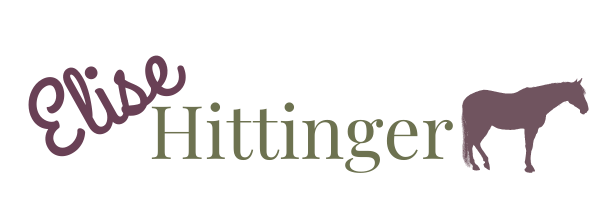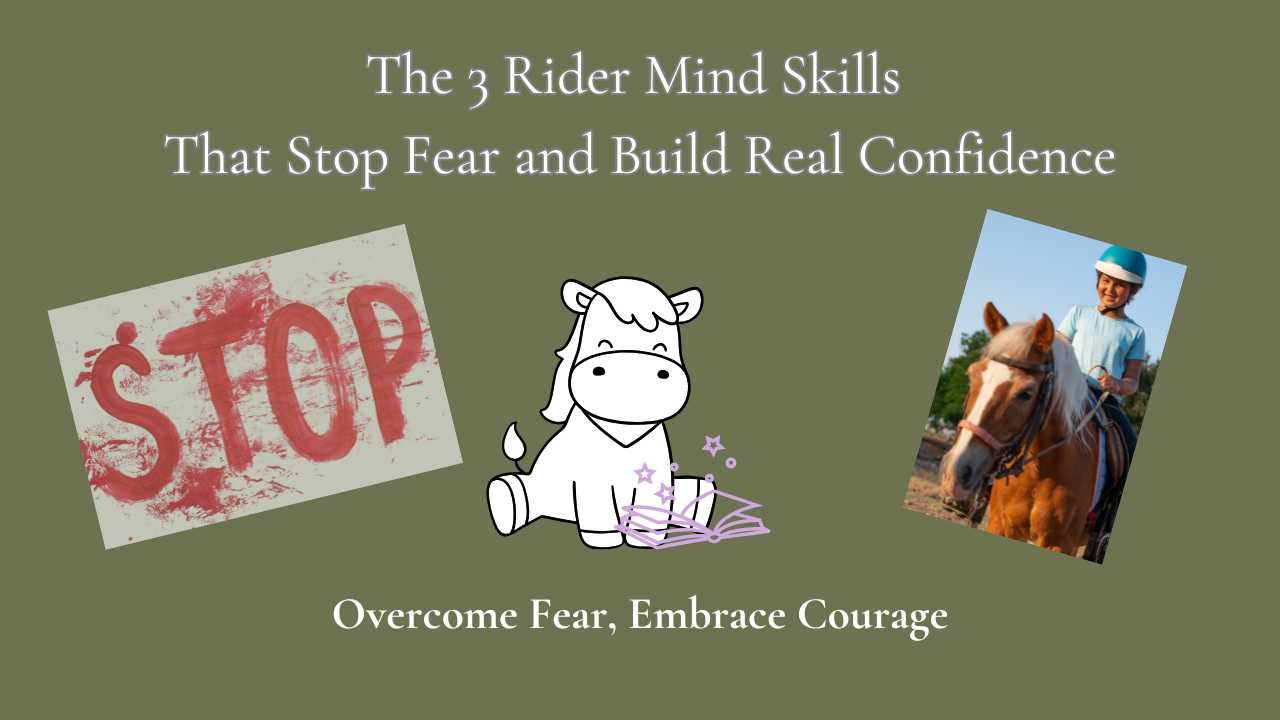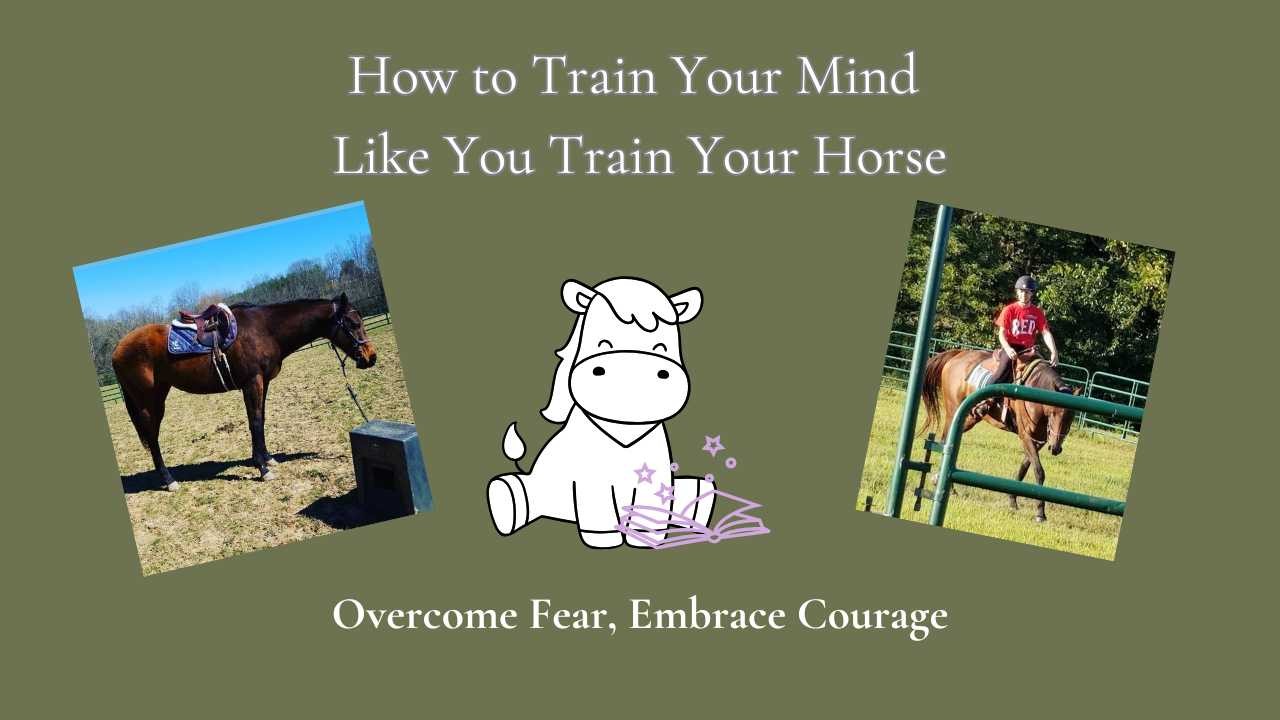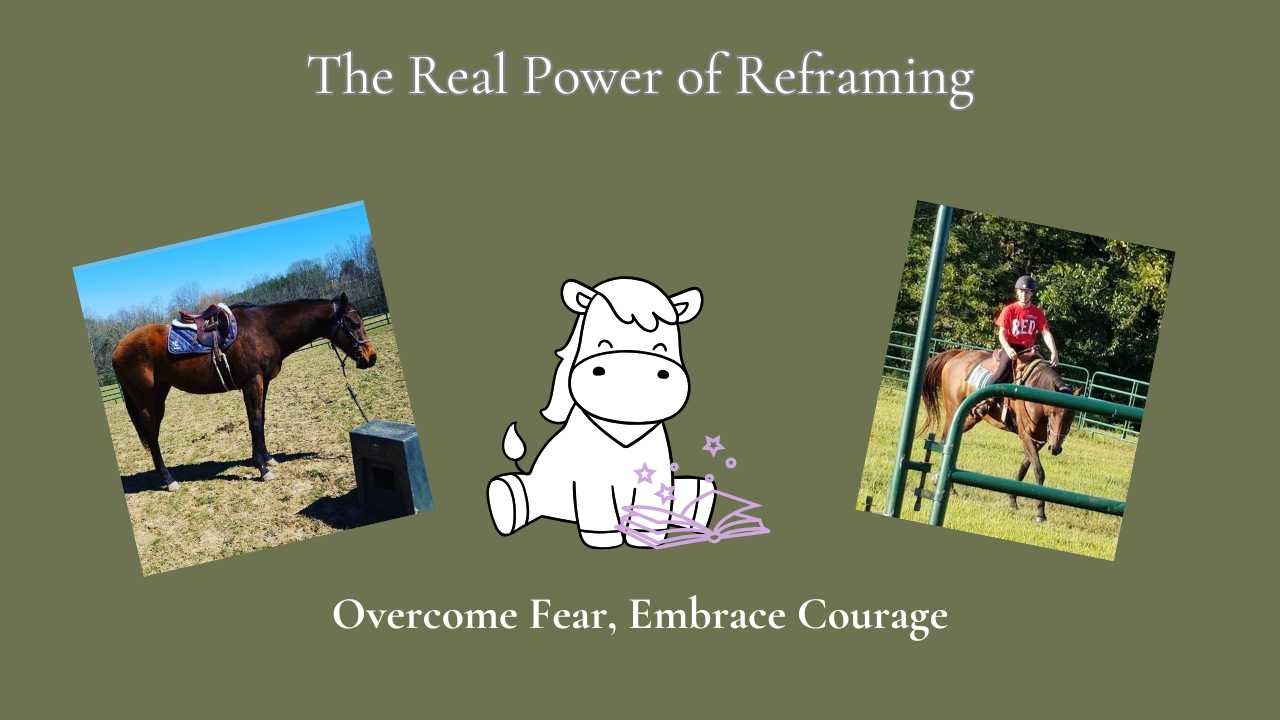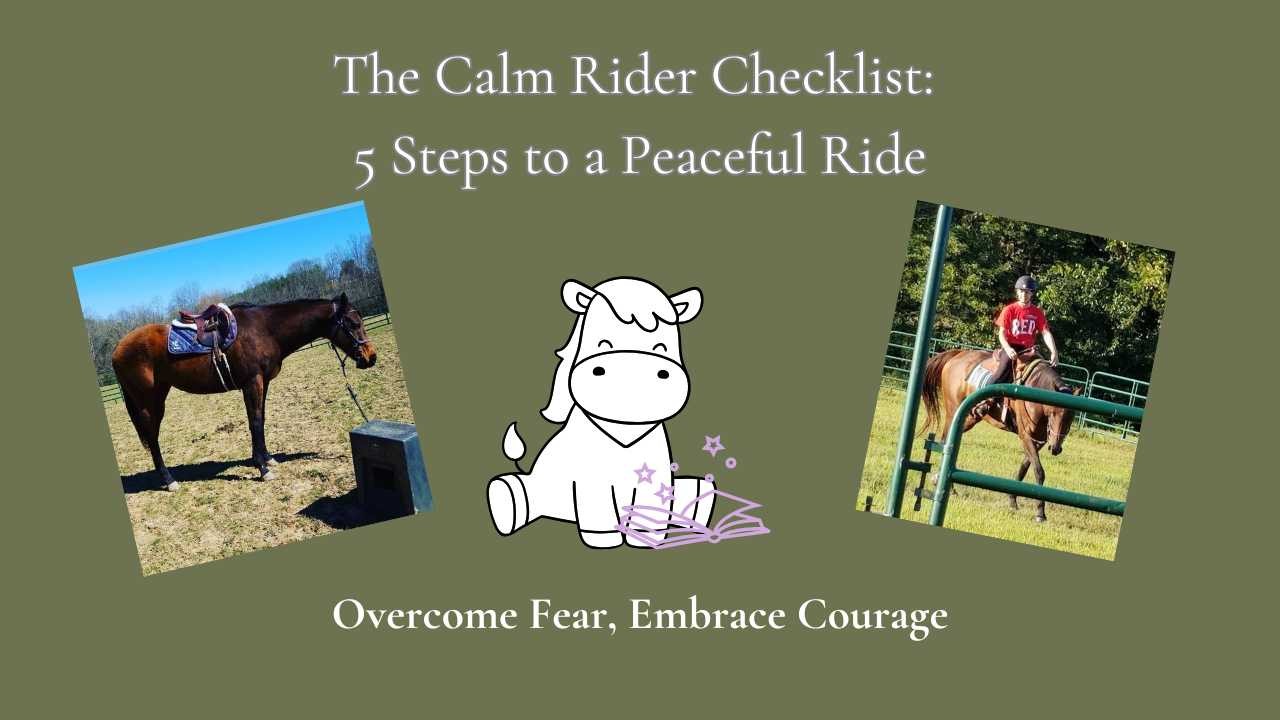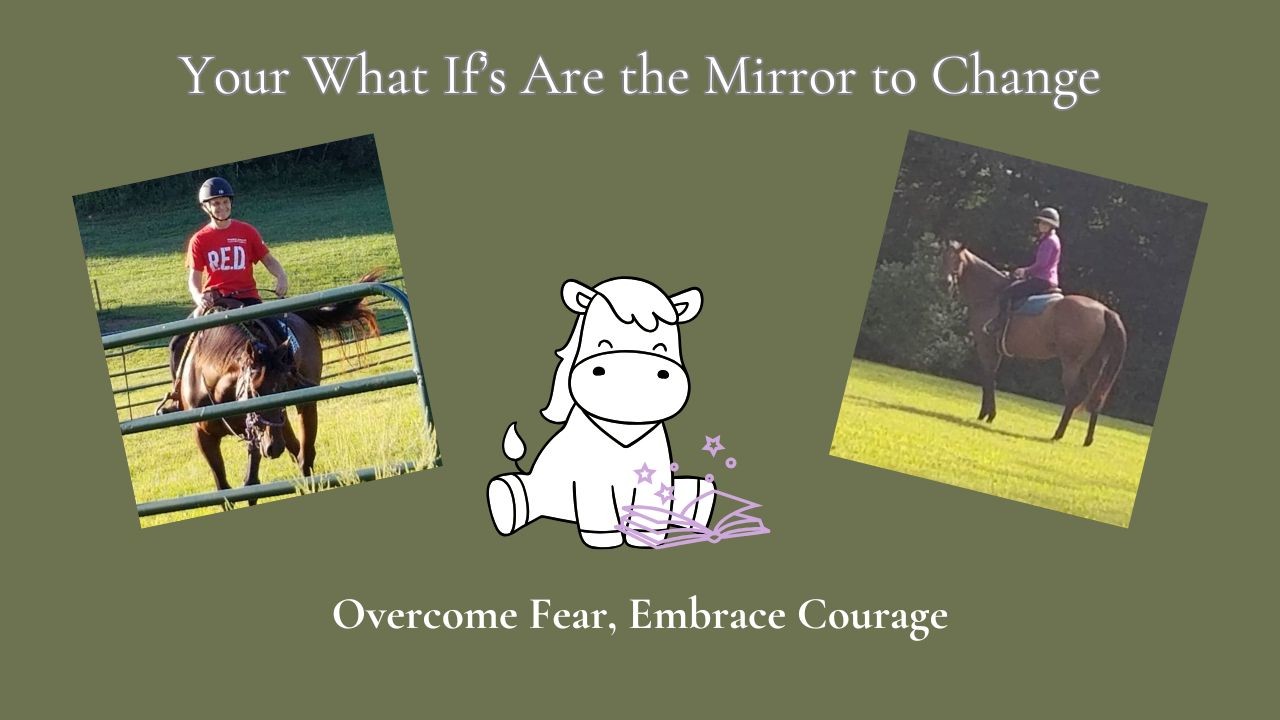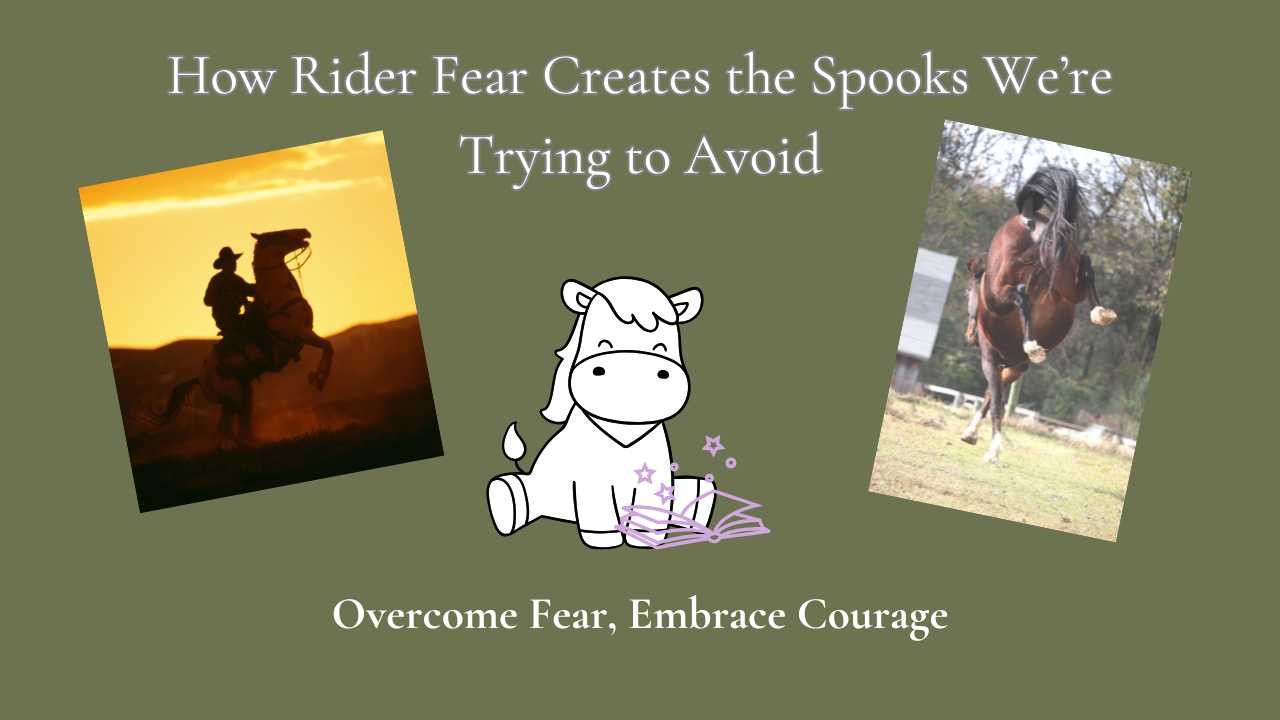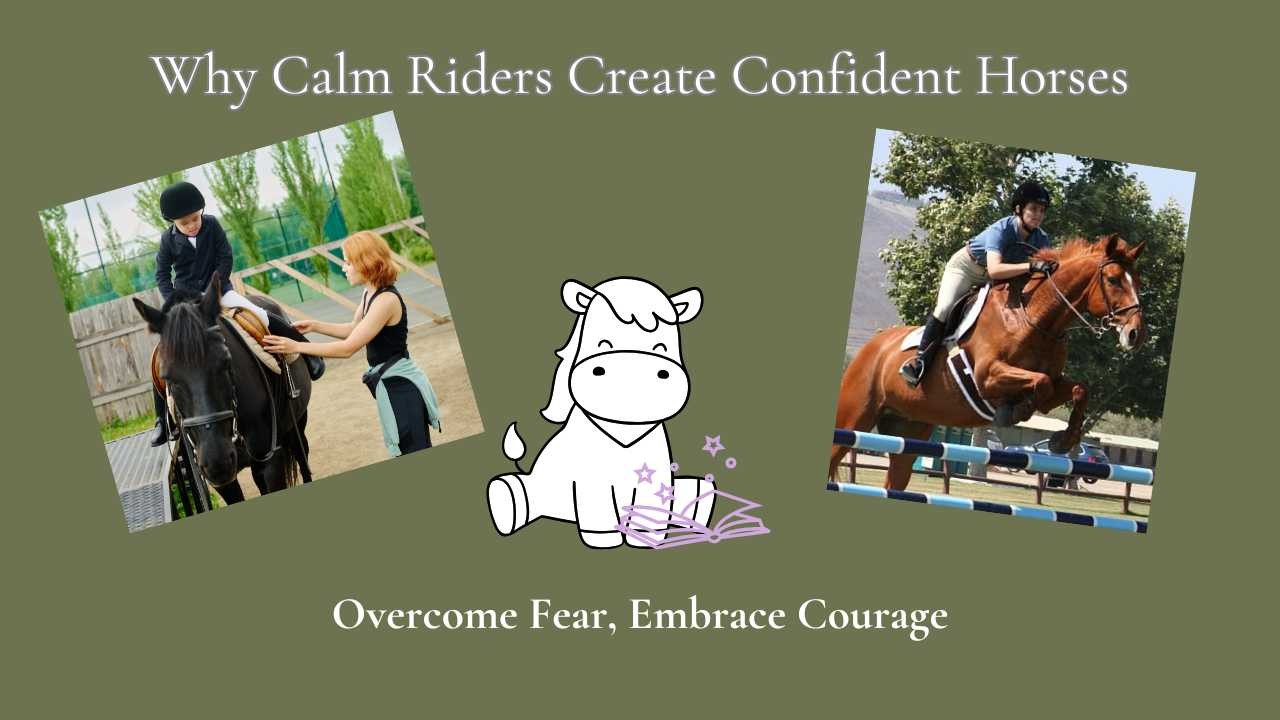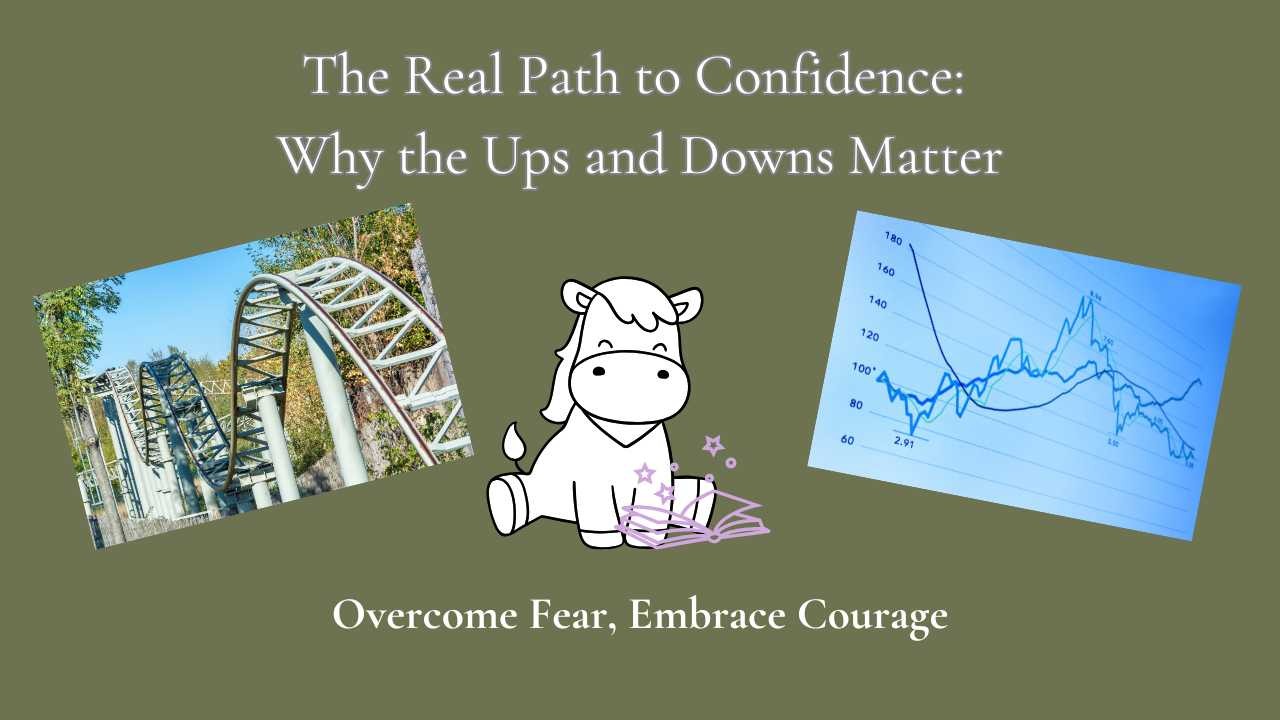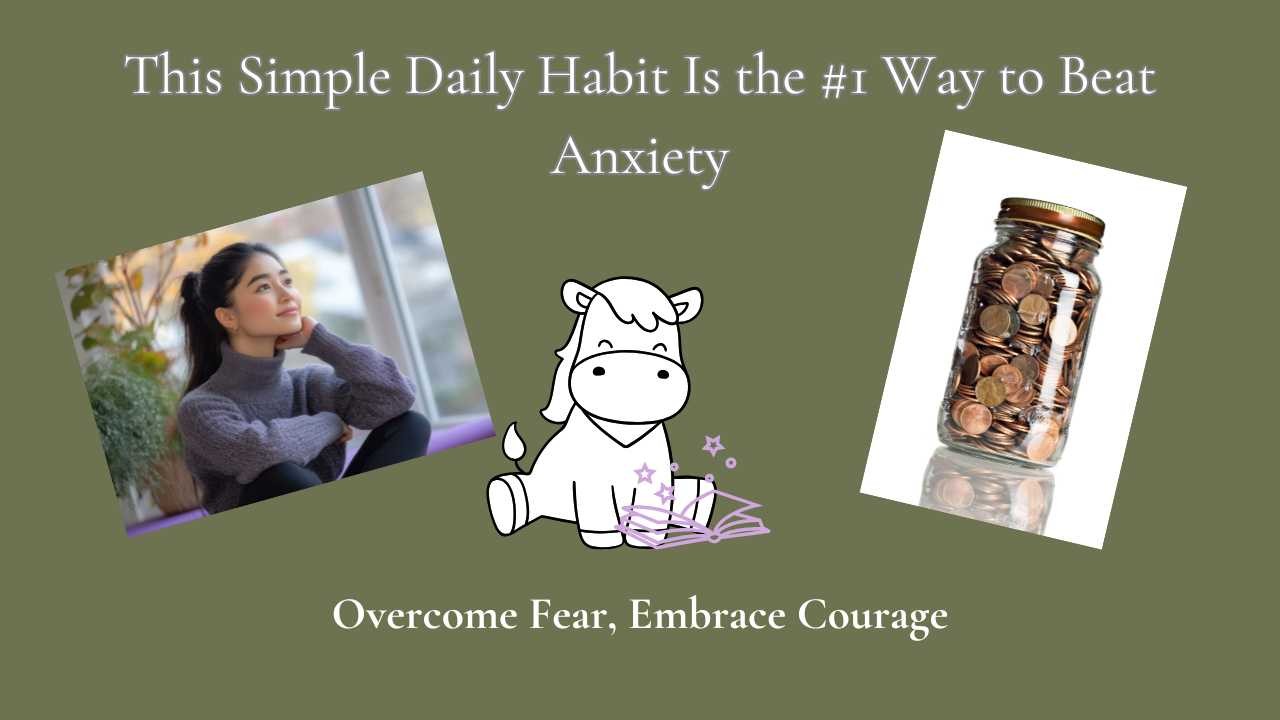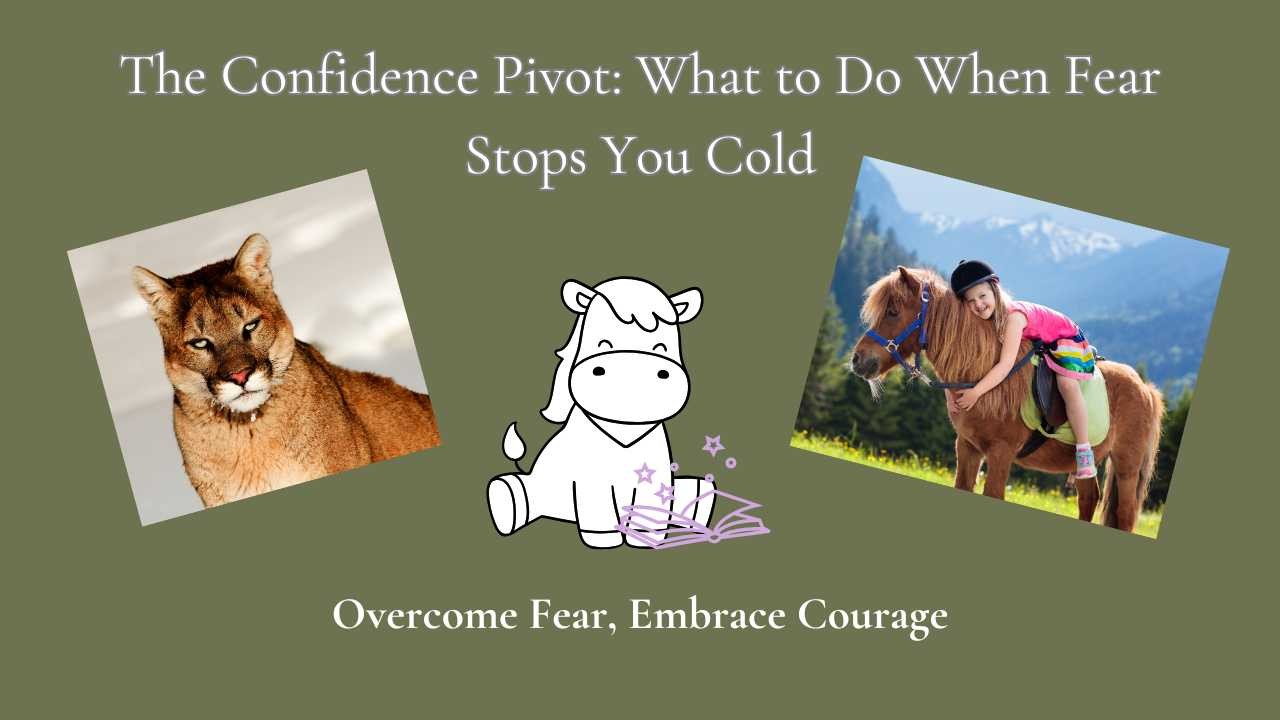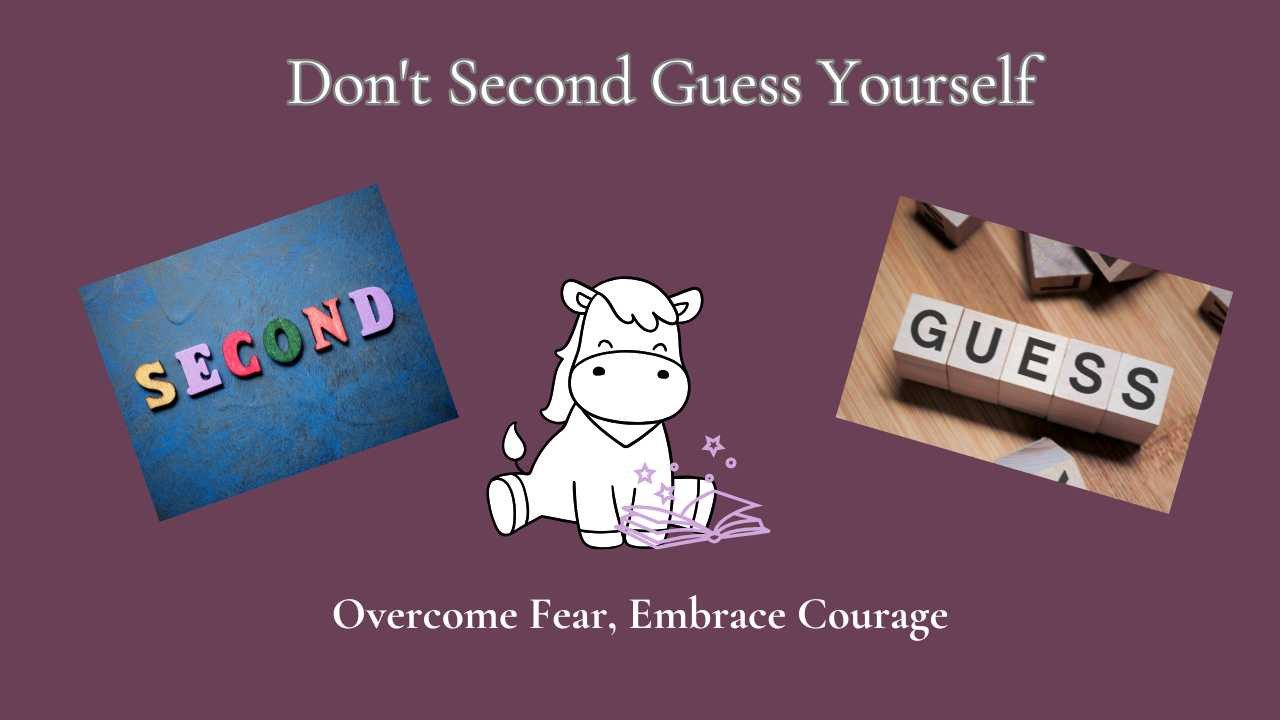
If you’ve ever sat in the saddle and suddenly felt your chest tighten, your thoughts race, or your brain says, “what if something goes wrong?”—you’re not alone.
Confidence in riding doesn’t come from perfect weather, the right boots, or a well-behaved horse (though those do help!). It comes from how we handle the thoughts that pop up—especially the ones that make us doubt ourselves.
What’s the secret to building real riding confidence?
It starts with recognizing that self-doubt doesn’t mean something is wrong.
It often means you’re growing, stretching, or returning to riding after a setback.
That inner dialogue—the one that whispers things like:
- “You’re not ready.”
- “You’re not as good as other riders.”
- “You should just give up.”
...isn’t proof you’re failing. It’s proof that your brain is trying to protect you from a perceived threat—even if the “threat” is just looking less than perfect.
But confidence isn’t about silencing the inner critic forever.
It’s about not giving it the reins.
It’s about not giving it the reins.
Here are 3 practical ways to build your riding confidence:
- Name your inner critic—and then disagree with it.
Give it a silly name. Hear what it says and answer back with truth. "Thanks Nerdie, but I AM ready for this!" - Visualize successful rides.
Your brain doesn’t know the difference between imagined success and real experience. Visualizing calm, smooth rides helps your nervous system believe they’re possible—and gets you one step closer. - Celebrate courage, not just outcomes.
Rode for 10 minutes even when you were nervous? That’s courage.
Mounted up after a long break? That’s courage.
Confidence is built in these small, brave moments—not in perfection.
Every rider—even the most experienced—has moments of doubt. The key is learning to ride with the doubt.
Want more support letting go of self-doubt and reconnecting with your confidence?
Tune into the latest podcast episode: Your Inner Critic Doesn’t Get to Ride: Listen Here!
Tune into the latest podcast episode: Your Inner Critic Doesn’t Get to Ride: Listen Here!
Let’s keep riding forward—one confident step at a time.
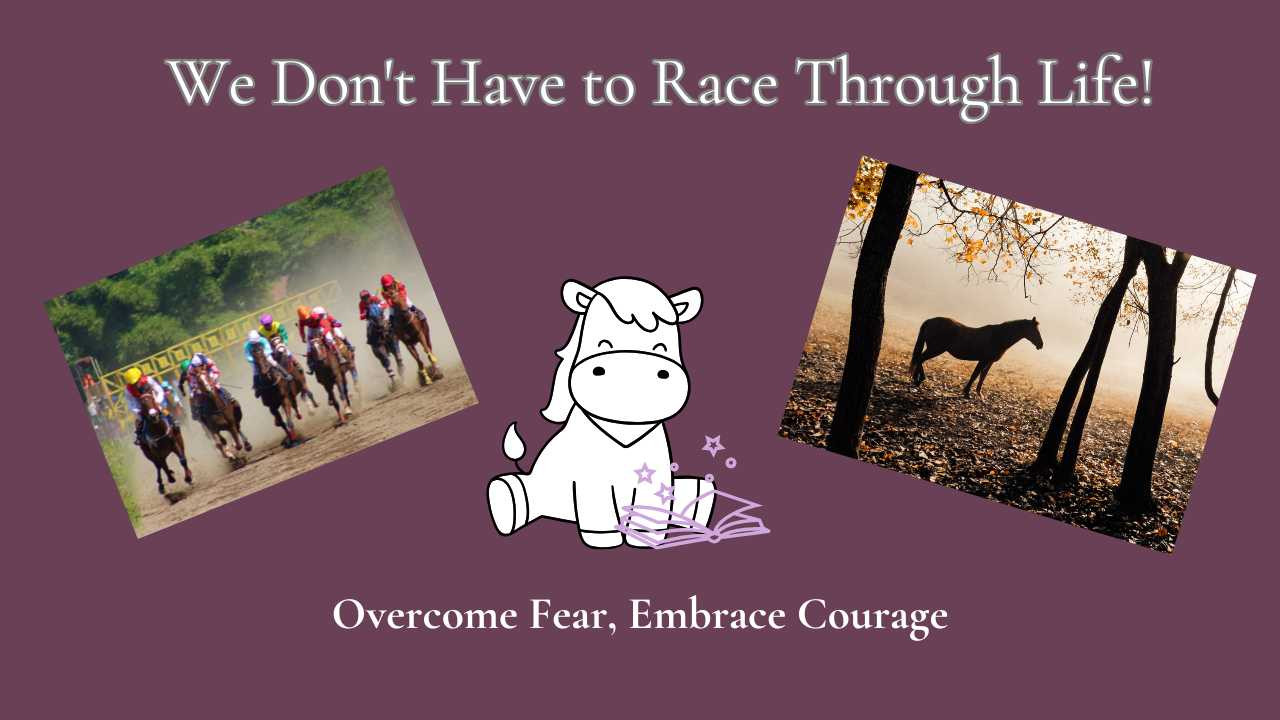
It was such a simple thing—I was putting water into my hot water pot.
And yet, I found myself pushing on the handle, hard, as if that would somehow make the water come out faster. It was totally subconscious. I have no idea how many years I’ve been doing this—pushing, hurrying, rushing—without even noticing.
But in that moment, I did notice. And it was shocking.
It instantly made me reflect: where else am I trying to speed through life?
We’ve all done it—tapped the steering wheel at a red light to try to “will” it green, scarfed down fast food so we could move on to the next task, or tried to multitask a dozen things at once. We’ve all been caught in the race.
But life is not meant to be raced through.
It’s meant to be enjoyed. Savored. Lived.
That old cliché, “Stop and smell the roses,” was spot on. But it’s not just about roses—it’s about the whole garden of life.
You know who really understands this? Horses.
Sure, mine sometimes race around the pasture, but most of the time, they’re just... chill. Grazing. Resting. Breathing. They wouldn’t care one bit how fast the water goes into the hot water pot.
The big question: How do I slow down and still accomplish everything?
What happened next surprised me.
I did slow down. I let the tension melt from my body. I relaxed.
And then... I accomplished more. I felt energized instead of drained. Calm instead of chaotic.
We don’t realize how much energy we waste living in stress mode. That same energy, when freed, can be used to actually live our life.
A Few Keys to Slowing Down:
- Notice what stresses you out. Write them down. Awareness is the first step.
- Tune into your body. Where do you feel tension? Scrunch up your muscles and then release them. Do this a few times—it feels amazing.
- Practice what we teach our horses. When our horses are stressed, we notice. We help them relax. Let’s turn that same care toward ourselves.
You don’t have to race through life to get things done. In fact, slowing down might just be the secret to doing it all—with more joy, more peace, and a lot less stress.
Check out my podcast if you want to hear my thoughts on this subject in "Permission
to Go Slow", Episode 109 of Turn Riding Fear Around.
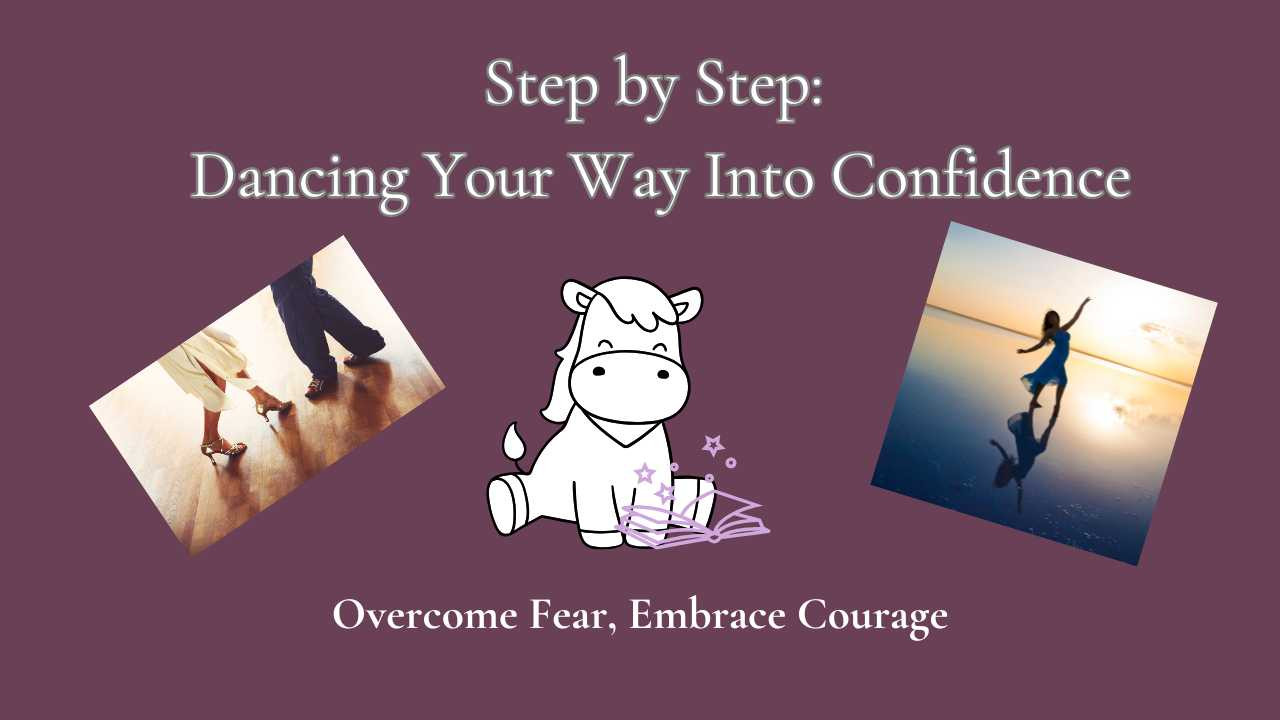
Confidence isn’t something you either wake up with or without. It’s not a mood. It’s not a lucky streak. And it definitely isn’t reserved for “other people” who seem born with it.
Confidence is a muscle—and like any muscle, it builds over time, with repetition and practice. But what most people miss is this: confidence also has rhythm. It has movement. It grows step by step, just like learning to dance.
And here’s the thing—confidence doesn’t grow in isolation. It grows in relationship. In response. In motion. It’s like dancing. You learn the steps, you miss a few, you trip, you laugh, and you keep going. The question is: who or what are you dancing with?
Are you dancing with:
- Perfectionism that leads and pulls you too tight?
- Self-doubt whispering every wrong move in your ear?
- Or are you partnered with curiosity, willingness, and a little courage?
Confidence builds when you keep moving, even when the music changes.
That means showing up for yourself on the days you’d rather hide.
It means trying the new thing before you feel ready.
It means trusting your own rhythm—even when someone else would do it differently.
It means trying the new thing before you feel ready.
It means trusting your own rhythm—even when someone else would do it differently.
The good news? You don’t have to start big. Confidence doesn’t demand a spotlight. It just asks for one small move forward. Then another. Then one more. Every repetition, every try, every “I did it anyway” adds weight to the muscle—and grace to your steps.
So if you’re feeling offbeat, out of sync, or like you’re fumbling through life’s choreography—breathe. You’re not failing. You’re training. I started out looking like Elaine on Friends! Hahaha.
Confidence doesn’t come from waiting to feel brave. It comes from moving anyway—and realizing you didn’t fall apart. That’s the rhythm. That’s how the muscle grows. That’s the dance.
Want help finding your next step in the dance? Tune into Episode 108 of the podcast: Confidence Isn’t a Mood, It’s a Muscle. I’ll walk you through how to stop waiting for confidence to arrive—and start building it, one move at a time. Podcast
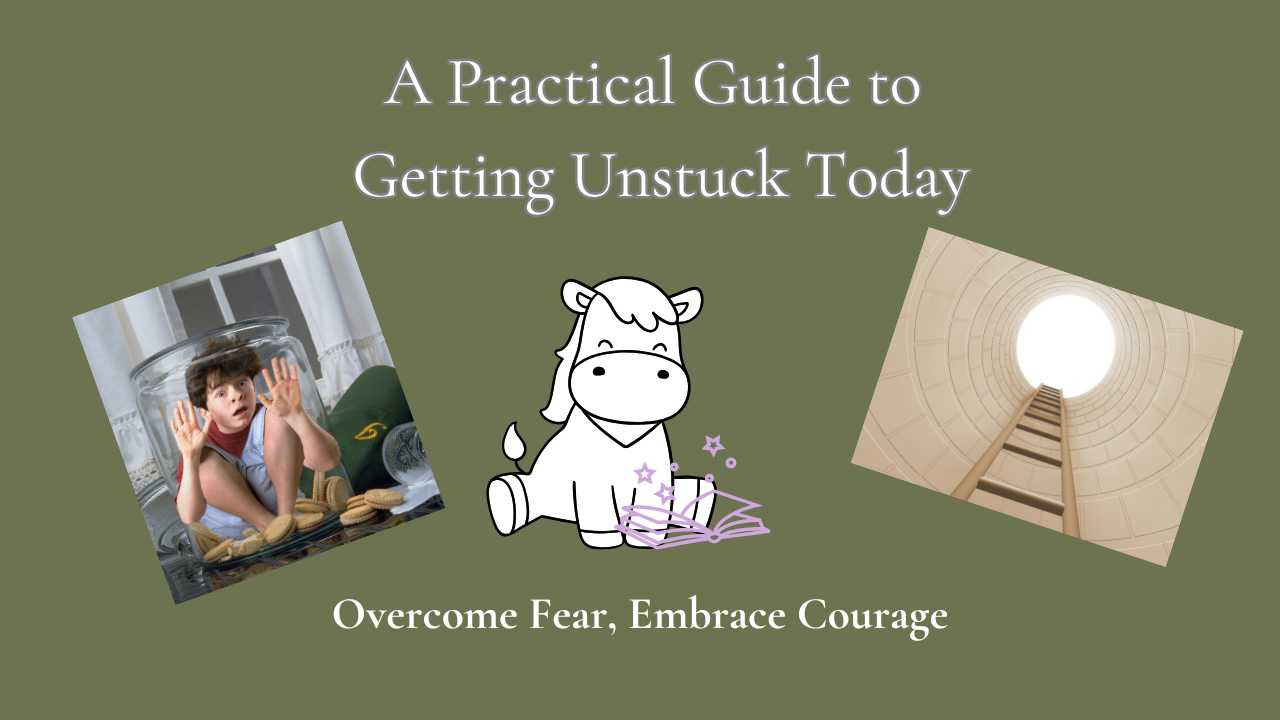
There have been many times in my life when I felt stuck. I used to blame others—my circumstances, my past, or the people around me. But looking back now, I realize something important: nobody was keeping me stuck.
I was letting fear hold me hostage.
We’ve all been through seasons that felt out of our control—an unhappy childhood, an unhealthy relationship, or a job that drained us. We’ve all been stuck. But stuck doesn’t mean broken.
And here’s the good news: stuck is temporary—if you know how to shift.
So often we blame others—or fear itself—for our lack of progress. But when we get honest and dig deeper, we find that we are both the barrier and the solution. Because fear isn’t really the enemy. Fear can be useful. It alerts us. It sharpens us. It can even motivate us.
What keeps us spinning in circles is that foggy, frozen place where we don’t know what to do next.
That’s stuck. And it’s frustrating, exhausting, and discouraging.
But getting unstuck doesn’t require a life overhaul. It starts with one small, intentional step.
Here’s your practical guide to start shifting today:
🔹 Get honest with yourself.
Ask: What am I avoiding? Stuck often hides behind procrastination, perfectionism, or pretending it’s “not the right time.” Name it. Write it down. That’s the beginning of freedom.
Ask: What am I avoiding? Stuck often hides behind procrastination, perfectionism, or pretending it’s “not the right time.” Name it. Write it down. That’s the beginning of freedom.
🔹 Take responsibility.
It’s not on someone else to fix you. You may not have created the situation—but you are the one who will create the change.
It’s not on someone else to fix you. You may not have created the situation—but you are the one who will create the change.
🔹 Move—literally.
Physical movement disrupts mental stuckness. Go for a walk. Stretch. Breathe deeply. It wakes up possibility.
Physical movement disrupts mental stuckness. Go for a walk. Stretch. Breathe deeply. It wakes up possibility.
🔹 Do one micro-action.
Send the email. Open the journal. Make the call. Action creates clarity. Motivation follows movement.
Send the email. Open the journal. Make the call. Action creates clarity. Motivation follows movement.
🔹 Ask for support.
Isolation fuels fear. Connection builds courage. Talk to a coach, mentor, or friend who sees your potential.
Isolation fuels fear. Connection builds courage. Talk to a coach, mentor, or friend who sees your potential.
Stuck is not your identity. It’s just a place you’re passing through.
You’ve gotten unstuck before. You can do it again.
If this resonates, and you want to dive deeper, tune in to Episode 107 of my podcast: Fear Isn’t the Enemy—Stuck Is. I share more about how to shift out of fear and into momentum—even when it’s messy. (You can listen here: Podcast)
Start small. Start now. That’s how the breakthrough begins.
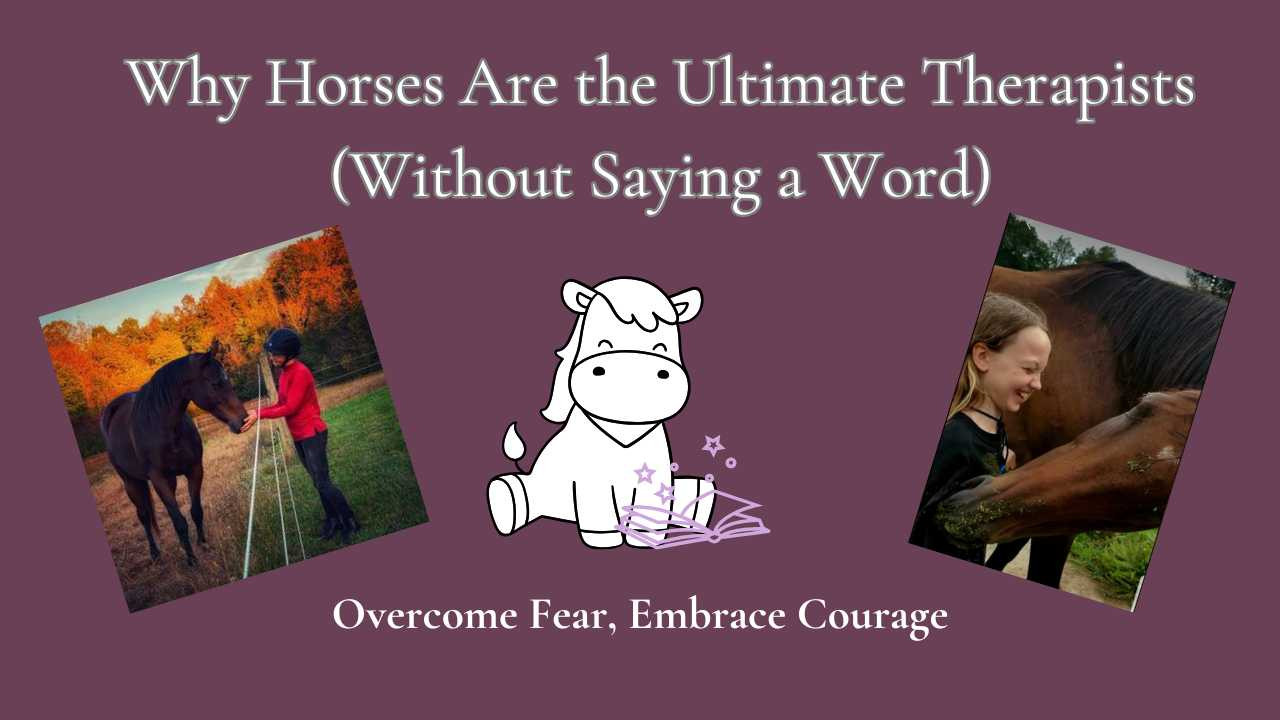
We’ve all heard it said:
Horses help us heal.
Horses help us heal.
But how often do we really notice how much we carry into the pasture?
Many of us walk into the barn dragging invisible baggage—stress, heartbreak, anxiety, grief—and without even realizing it, we offload that emotional weight onto our horses.
And here’s the incredible part:
They love us anyway.
It’s our responsibility to be present—not just physically, but mentally—for our horses.
Think about horses in the wild.
Their survival depends on energetic awareness. If one horse feels tension or anxiety, the entire herd feels it and responds.
Now imagine stepping into that sensitive herd with a head full of chaos.
That’s what we do every time we show up distracted, stressed, or emotionally overwhelmed.
And our horses? They hold space. They take it in. They absorb it, even when they don’t understand it.
Their survival depends on energetic awareness. If one horse feels tension or anxiety, the entire herd feels it and responds.
Now imagine stepping into that sensitive herd with a head full of chaos.
That’s what we do every time we show up distracted, stressed, or emotionally overwhelmed.
And our horses? They hold space. They take it in. They absorb it, even when they don’t understand it.
Our Horses Feel What We Feel
When we’re grieving, they offer their necks for tears.
When we’re sad, they stand quietly beside us.
When we’re stressed, their big hearts help carry the load.
When we’re anxious, they ground us in the now—if we let them.
When we’re sad, they stand quietly beside us.
When we’re stressed, their big hearts help carry the load.
When we’re anxious, they ground us in the now—if we let them.
But healing is a two-way street.
It’s Time to Give Back to Our Silent Healers
Let’s start showing up for them the way they’ve always shown up for us:
- Show up joyful—and watch how they mirror that light.
- Show up calm and confident—and notice how their energy softens.
- Show up playful and present—and see them offer connection, even putting their nose in the halter for you.
Our horses don’t want treats. (Ok, some horses might want treats....hahahaha)
They want us—body, heart, and soul.
Not our worries. Not our stress. Not our past.
Just our presence.
They want us—body, heart, and soul.
Not our worries. Not our stress. Not our past.
Just our presence.
Because when we show up whole, we don’t just heal—we help them heal too.
What if you didn’t have to bring the weight of the world into the pasture?
Your horse can feel what you’re carrying—and while they hold space with love, what if you could meet them with a clear, calm heart?
Through courage coaching and hypnotherapy, I help riders release anxiety, stress, and emotional overwhelm—without needing to carry it into every ride.
Let’s help you reset, for good.
Book your free Hypnotherapy Chat here: Hypnotherapy Chat
Your horse can feel what you’re carrying—and while they hold space with love, what if you could meet them with a clear, calm heart?
Through courage coaching and hypnotherapy, I help riders release anxiety, stress, and emotional overwhelm—without needing to carry it into every ride.
Let’s help you reset, for good.
Book your free Hypnotherapy Chat here: Hypnotherapy Chat
